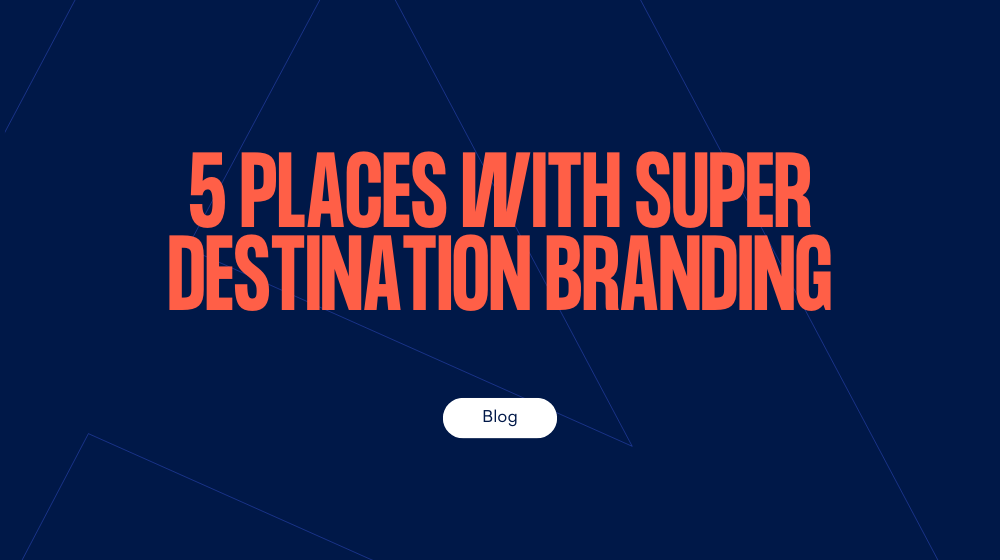When marketing a destination or place, creating a strong but accessible identity is vital. This identity provides a platform for marketing, influencing how people perceive the place and even how the people living and working there see themselves.
Good destination branding considers not only the look and feel of a place, but its location, its history and even its people. The examples below show how great branding captures the essence of a destination and conveys it efficiently, effectively and effortlessly.
I Amsterdam
With competition for tourism growing among European cities, Amsterdam needed a rebrand. In 2004, the ‘I Amsterdam’ brand was created, to market the city to foreign visitors and reignite civic pride among locals. Amsterdam Partners, the public-private partnership responsible for marketing the Netherlands, wanted to move the city away from its image of sex and drugs and position it as a destination ideal for working and living in.
The I Amsterdam visual branding is striking and memorable. If you’ve visited Amsterdam in the past decade, you’ll no doubt have seen the giant I Amsterdam letters, which offer the perfect photo opportunity and have become an attraction themselves. The I Amsterdam branding was implemented across media channels, including web, social media, print and events. The branding success lies in its celebration of the city’s strongest asset – its people.
Dubai
Unlike Amsterdam, where branding had to consider a rich history and lasting perceptions, marketing Dubai was about positioning not repositioning. Dubai is a perfect example of how identity can be built from scratch through placemaking – making sure the destination is known for what exists there.
Dubai’s strategic decision to become a transport hub propelled its destination marketing success. Its international airport now serves around 80 million passengers every day, bringing trade, investment and, of course, interest to the city. Placemaking within Dubai, through the development of such places as The Palm, The World islands and the Burj al Khalifa tower, formed the basis of targeted and highly successful promotion of Dubai as a place built for the wealthy.
VisitBritain
VisitBritain promotes England to the domestic market and in 2003, it introduced its ‘Enjoy England’ branding. After England was being overlooked in favour of overseas holidays, a strong brand was needed that reflected the country’s diverse holiday offering.
The process began with VisitBritain consulting key stakeholders and questioning customers. From this, three values were identified that represented the England brand: real, fun and indulgence. The Enjoy England brand has been used in multi-partner campaigns and has successfully raised awareness that a holiday in England can be as fun as going abroad.
El Salvador
El Salvador’s gang violence has long dominated news headlines, meaning even the most daring of travellers have steered clear. Although the country’s violence is an issue, it must be said that much of what has appeared in newspapers is somewhat of a myth. In April this year, El Salvador underwent a national rebranding, designed to alter negative perceptions about the country and promote it as both a tourist destination and a growing global economy.
Agency Interbrand created a visual identity which could appeal to both tourism and business orientated audiences, using indigo blue in a nod to the country’s flag and surrounding Pacific Ocean as well as a gold which referenced its important resources and exports. These colours ran throughout the brand identity, along with the slogan – ‘Great like our people’. Another great example of destination branding, this re-envisioning again incorporates the people of the place, whilst respecting El Salvador’s heritage and natural beauty.
Glasgow
Glasgow is a truly unique place. With Mackintosh’s mark visible across the city, art reigns supreme in Scotland’s largest city. Despite this, it has been marred by negative perceptions and misconceptions of its centre and its people, meaning Edinburgh’s pull for tourism grew stronger.
Tasked with reinventing their city, the Glasgow marketing bureau created a campaign which drew on ideas from more than 1,500 people across the globe. The ‘People Make Glasgow’ campaign, recognisable in its electric pink colour scheme, was featured on billboards, taxis, buses; highly visible areas.
Designed to create pride in the city, as well as drawing tourists to it as a destination, the slogan is both relatable and adaptable. ‘People Make Glasgow’ ‘People Make Glasgow home’ ‘People Make Glasgow Creative’. People are again at the heart of this destination brand.
This article gives a brief insight into planning and delivering placemaking communications. There's a lot more detail in our ebook Effective Placemaking Communications For Your Mixed-Use Development, Volume 2: Create, which you can download for free.




